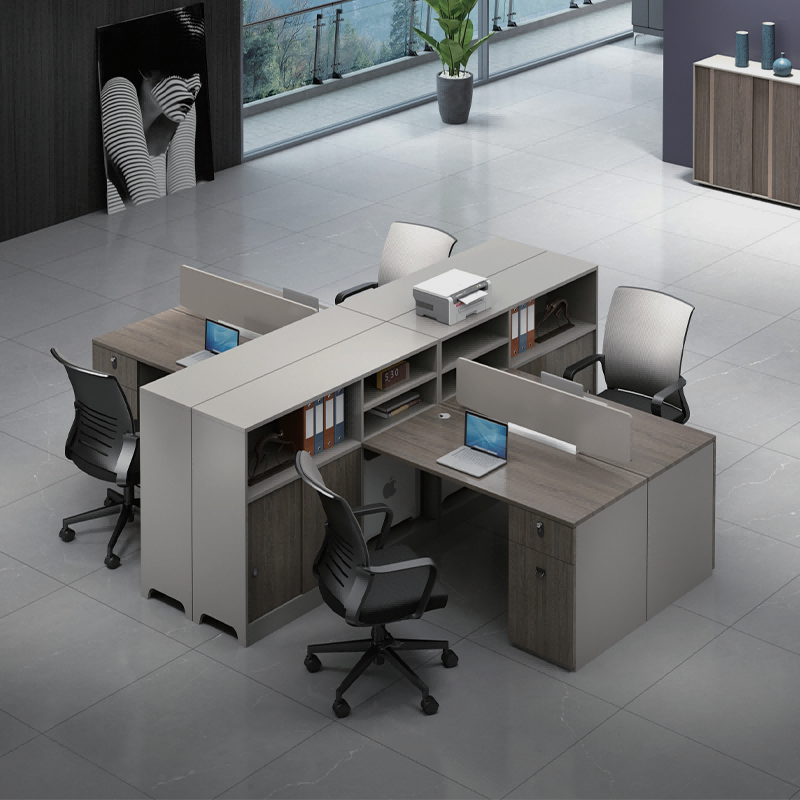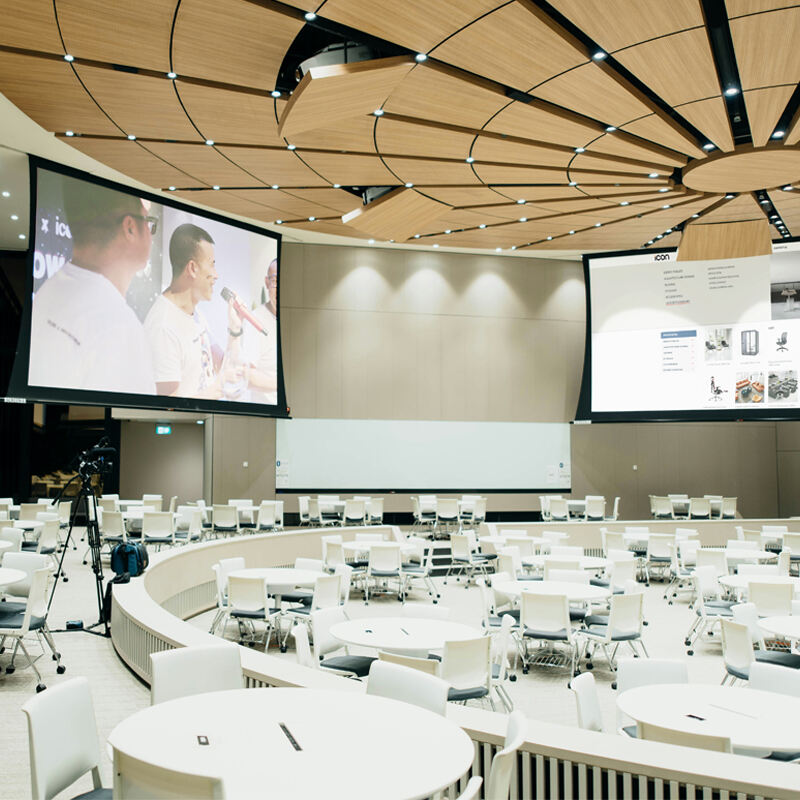Strategic Bulk Desk Arrangement for Maximum Productivity
The Business CASE for Optimized Bulk Office Desks
Optimizing bulk office desk layouts can notably increase productivity and reduce costs in a business setting. Research reveals that strategic desk layouts can boost employee output by up to 20% through improved ergonomics and workflow efficiency ("10 Ways OFFICE FURNITURE Can Improve Productivity"). Moreover, efficient space utilization in a well-designed office can lead to significant savings in real estate and utility costs. By organizing desks to maximize space, companies not only enhance employee performance but also minimize overhead expenses.
Many organizations have seen substantial benefits from implementing bulk desk solutions. For instance, a leading tech firm reported a 15% rise in productivity and approximately 12% savings in operational costs after redesigning their office layout to accommodate strategically placed bulk desks. Such reconfigurations often lead to improved collaboration, reduced noise levels, and better utilization of available space, further underscoring the business value in investing in optimized bulk office desks. Integrating thoughtful design with strategic planning can yield quantifiable benefits that encourage businesses to reassess their workspace arrangements.
Key Principles of High-Output Workspace Design
Designing high-output workspaces revolves around several key principles: flexibility, accessibility, and aesthetics. Flexibility in furniture, like adjustable office chairs and sit-to-stand desks, empowers employees to customize their workstations for comfort, thereby enhancing productivity ("8 Perks of Setting Up an Office Desk for Sale"). Accessibility is also vital—placing desks near natural light sources, for instance, has been proven to increase alertness and focus.
Creating layouts that foster collaboration is crucial. Arranging desks in clusters or circles can encourage teamwork and improve communication, essential for project-based work environments. In addition, the aesthetic appeal of spaces significantly influences morale and productivity. According to a study cited by [Rylie Holt], incorporating vibrant colors and ergonomic designs in the workspace can boost creativity and reduce stress levels, leading to a more productive work atmosphere.
Thus, by blending ergonomic furniture choices with clever spatial organization and appealing design elements, companies can cultivate work environments that not only maximize employee satisfaction but also bolster overall productivity.
Space Optimization Strategies for Bulk Office Desks
Modular Layouts for Agile Team Configurations
Modular furniture has become a critical component in designing workspaces that accommodate agile team configurations. Its adaptability fosters dynamic team structures by allowing workspaces to be reconfigured easily and quickly. Modular layouts can consist of flexible seating, collapsible tables, and mobile partitions that optimize space utilization and promote collaboration. For example, a U-shaped arrangement can facilitate a centralized discussion area, while linear configurations allow for individual focus zones. Data from workspace studies indicate that such arrangements can reduce wasted space by up to 30% compared to traditional setups. To plan these layouts effectively, businesses can leverage user-friendly design software like SketchUp, which allows for precise modeling of spaces.
Ergonomic Zones with Task-Specific Desk Heights
Establishing ergonomic zones within the office is essential for preventing workplace injuries and enhancing employee satisfaction. Different tasks often require different desk heights, which can be adjusted to suit specific roles according to ergonomic research findings. Standing desks, for example, encourage movement and reduce the risk of musculoskeletal disorders. Conversely, seated desks with adjustable heights cater to tasks that demand prolonged focus. A study by the Human Factors and Ergonomics Society shows that such ergonomic adaptations can lead to a 25% increase in workplace satisfaction and a notable reduction in sick days. PRODUCTS like height-adjustable desks are designed to meet these ergonomic needs, accommodating diverse user preferences and promoting a healthier working environment.
Traffic Flow Design to Minimize Movement Disruptions
Effective traffic flow within an office layout is crucial in minimizing disruptions and enhancing productivity. Analyzing movement patterns and designing clear pathways can significantly reduce unnecessary commotion around bulk office desks. For instance, employing a radial layout where desks radiate outward from a central point allows for smooth circumnavigation and minimizes cross-traffic. The implementation of strategic desk placements has been shown to improve workflow efficiency by up to 15%, as indicated by statistics on workplace design efficiency. Incorporating space-saving partitions and pathway markers further supports seamless movement, ensuring that employees can navigate the space without hindrance, thereby optimizing overall productivity.
Tech Integration for Bulk Desk Efficiency
Centralized Cable Management Systems
Effective cable management is crucial in maintaining safety and aesthetics in bulk desk environments. Without a proper system, tangled cables can lead to hazards and create a cluttered workspace that detracts from professional ambiance. Various cable management systems, such as under-desk trays, floor raceways, or cable sleeves, offer different pros and cons. Under-desk trays are excellent for concealing cables out of sight, while floor raceways are ideal for high-traffic areas to prevent tripping. Expert recommendations often highlight the importance of adjustable systems that can adapt to changing office needs. According to the Electrical Safety Foundation International, mishandled cables are a significant safety risk, emphasizing the need for well-organized setups. Proper cable management systems can prevent these hazards by keeping cords securely managed and labeled.
Monitor Arm Compatibility Across Desk Types
The use of monitor arms across various desk types offers significant benefits regarding space saving and ergonomics. Monitor arms free up valuable desk space and allow users to adjust monitor height easily, reducing neck and eye strain. However, compatibility across different desk types can pose challenges, as not all desks provide the necessary stability or mounting options. Using desk clamp mounts or wall mounts where feasible can solve these issues, ensuring a secure fit for a wide range of desk designs. Studies, such as those from the National Institute for Occupational Safety and Health, have highlighted that optimal monitor placement can improve productivity by reducing discomfort. Ensuring the correct monitor height and distance allows employees to maintain an ergonomic posture, increasing overall office efficiency and comfort.
Strategic Power Distribution Planning
Strategic placement of power outlets is essential for maximizing efficiency and safety in bulk desk environments. Ensuring that power sources are within easy reach of each workstation reduces the need for potentially hazardous extension cords and promotes a more organized workspace. Advanced technologies like smart power strips and wireless charging pads are minimizing clutter while enhancing connectivity options for devices. These setups have been successfully implemented in modern office designs, showing marked improvements in both safety and energy efficiency. For instance, an office redesign incorporating wireless charging stations across desks not only streamlined device charging but also significantly reduced cable clutter, improving both functionality and aesthetics.
Employee-Centric Customization Approaches
Personalized Storage Solutions for Bulk Setups
Personalized storage solutions are crucial for maximizing efficiency and organization in office settings. Implementing tailored storage options that cater to individual roles or personal preferences can significantly enhance accessibility and reduce clutter. Various configurations, such as modular cabinets and rolling storage units, offer flexibility that traditional fixed storage cannot match. A study by the International Journal of Environmental Research and Public Health indicates that employees with access to personalized storage solutions spend less time searching for items, thus increasing productivity. In bulk environments, these systems can be particularly beneficial, ensuring that each employee has the necessary tools and materials within arm's reach.
Adjustable Lighting Configurations per Workstation
Adjustable lighting configurations are vital for reducing eye strain and enhancing focus in the workplace. Studies have shown that personalized lighting contributes to increased productivity and worker satisfaction. Options like LED desk lamps with adjustable brightness and direction, as well as natural light integration through window placement, can create an optimal work environment. For example, workplaces utilizing LED technology report fewer incidents of headaches and eye strain among employees. Successful installations, such as those seen in modern co-working spaces, prove the effectiveness of adaptable lighting solutions in fostering a conducive work atmosphere.
Modular Privacy Screen Implementations
The use of privacy screens can significantly improve concentration and minimize distractions in open office environments. Modular privacy screens come in a variety of designs such as frosted glass panels and fabric-covered partitions, allowing custom arrangements that fit specific needs. Feedback from users highlights improved concentration and reduced noise levels as primary benefits. According to a survey published in the Journal of Occupational Health Psychology, privacy enhancements lead to a 40% increase in employee satisfaction and performance. These screens are particularly valuable in promoting focus without the need for permanent structural changes.
Sustaining Productivity Through Maintenance
Preventative Maintenance Routines for Bulk Desks
Establishing regular preventative maintenance routines is crucial to ensuring the durability and functionality of bulk office desks. By implementing consistent maintenance schedules, businesses can mitigate common issues such as wear and tear, alignment problems, and surface damage, which could otherwise disrupt daily operations. Regularly inspecting and maintaining desks not only reduces repair costs but also minimizes workplace downtime associated with neglected furniture. In fact, statistics indicate that businesses can reduce downtime by up to 30% through proper maintenance practices, highlighting its importance for sustained productivity.
Ergonomic Reassessment Protocols
Regular ergonomic assessments play a pivotal role in enhancing employee comfort and productivity. By setting up effective reassessment protocols, businesses can ensure that workplace furniture and setups are optimal for reducing strain and promoting health. Research on workspace ergonomics underscores the importance of these assessments in preventing health-related issues, such as musculoskeletal disorders, which can lead to decreased productivity and increased healthcare costs. Detailed guidelines on reassessment protocols ensure that employees adopt healthy postures, ultimately leading to a reduction in health-related expenses by nearly 20% (Journal of Occupational Health).
Scalability Planning for Future Expansions
Designing bulk office desk spaces with future scalability in mind is essential for accommodating business growth. Strategic planning allows for adaptability to the evolving needs of a company without significant disruptions or costly reconfigurations. Various strategies, such as modular furniture designs and flexible layouts, support seamless expansions and scalability. Successful examples, like tech companies that have anticipated growth trends and implemented scalable solutions, showcase the benefits of proactive planning. These businesses have seen an increase in operational efficiency and reduced costs associated with frequent office redesigns.





